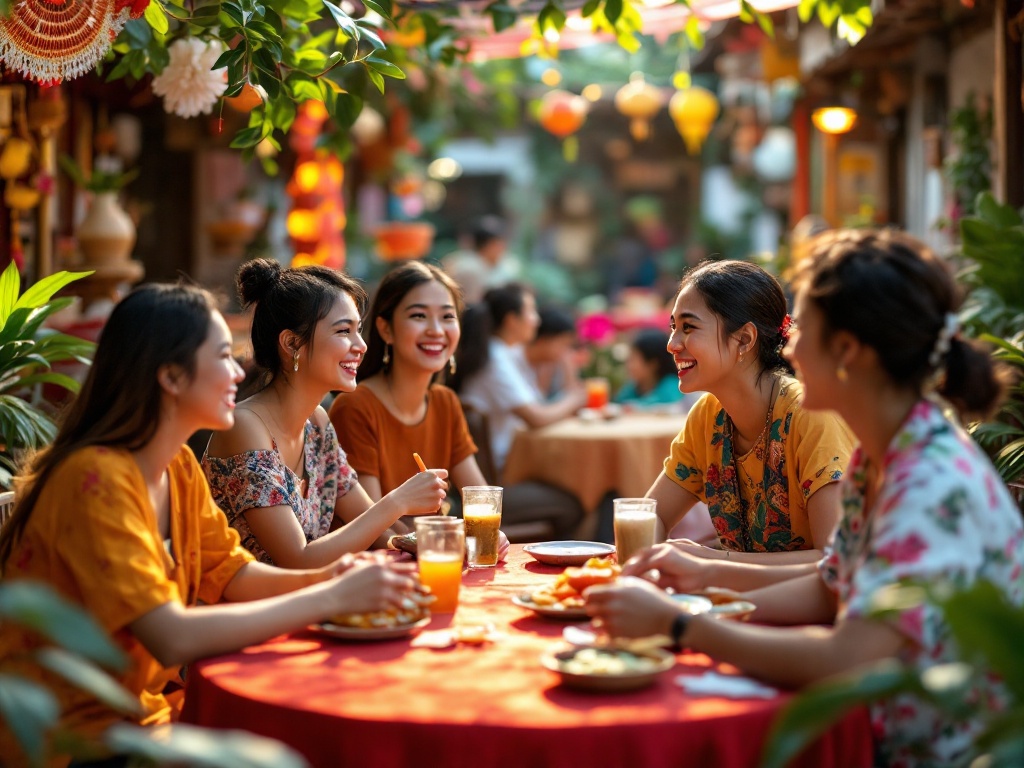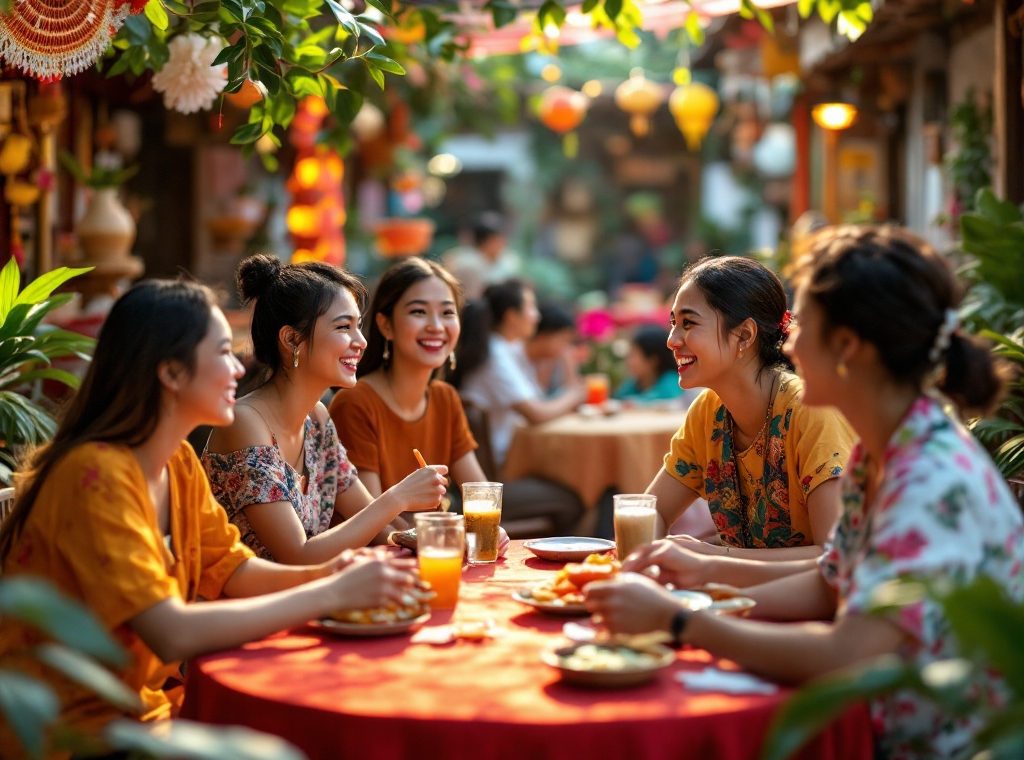Filipino Core Values: How to Talk to Locals
Discover the rich tapestry of Filipino culture, where warmth and hospitality are deeply rooted in core values like Bayanihan (community spirit), Pakikisama (smooth interpersonal relationships), and Utang na Loob (reciprocity). Explore the concept of “Kapwa,” the shared identity that binds Filipinos together, and “Hiya,” the value of modesty and self-respect. Learn how indirect communication, polite speech, and nuanced non-verbal cues, like the raised eyebrow greeting and lip pointing, shape Filipino interactions. Unlock a deeper understanding of Filipino values and communication styles to build stronger connections and gain valuable cultural insights. Dive in to enrich your understanding of the Filipino way of life.
Important information

- Filipino culture values family, warmth, and hospitality.
- Key values include “Bayanihan” (community spirit), “Pakikisama” (smooth relations), “Utang na Loob” (gratitude), and respect for elders.
- “Kapwa,” or shared identity, is fundamental to Filipino social interaction.
- Indirect communication and non-verbal cues, like gestures and body language, are important aspects of Filipino communication.
- Respect, especially for elders, is shown through polite language (like using “po”) and actions.
Understanding Filipino Core Values
Filipino culture is known for its warmth and hospitality, placing a strong emphasis on family ties. These qualities are rooted in core values that shape social interactions and harmony. Key Filipino values include:
- Bayanihan: this embodies the spirit of community and cooperation, where helping one another is paramount.
- Pakikisama: this fosters smooth interpersonal relationships by encouraging camaraderie and understanding.
- Utang na Loob: this underscores gratitude and reciprocity, emphasizing the importance of remembering acts of kindness.
- Paggalang sa mga Nakakatanda: this reflects respect for elders, demonstrated through polite language and gestures.
Religion and history have profoundly influenced these cultural nuances, contributing to a distinct Filipino identity. By understanding these values, you can forge stronger connections with Filipinos and gain deeper cultural insights.
Kapwa: The Foundation of Filipino Interpersonal Behavior
“Kapwa,” meaning “shared identity,” is fundamental to Filipino social interaction. It emphasizes connection and shared experiences, shaping how Filipinos relate to one another. This concept creates a powerful sense of community and belonging, fostering empathy, understanding, and unity across Filipino society.
Hiya: The Role of Modesty and Self-Respect
Modesty and self-respect are central to Filipino culture, embodied in the concept of “hiya.” This value shapes behavior and social interactions, encouraging humility and respectful conduct. Filipinos typically present themselves modestly and interact with others respectfully, reflecting these deeply held beliefs.
Pakikisama and Social Harmony
Pakikisama, a Filipino value, fosters harmony and strong communities by emphasizing social grace and teamwork. It encourages a sense of belonging and unity by going with the flow and avoiding disagreements. However, this emphasis on group cohesion can sometimes stifle individual expression. This leads people to hesitate when sharing differing viewpoints, hindering open communication.
Utang na Loob: Gratitude and Reciprocity
Utang na loob, a core Filipino value, revolves around debt, gratitude, and reciprocity. This cultural concept fosters close-knit communities by encouraging individuals to repay kindnesses, building strong bonds of trust and loyalty. Expressing gratitude further solidifies these relationships, ultimately strengthening Filipino communities.
How Filipinos Communicate
Filipinos often communicate indirectly to avoid causing discomfort or shame (hiya), demonstrating their social awareness. This value of politeness is especially important with elders and superiors as a sign of respect for hierarchy. Nonverbal cues, like body language and gestures, also play a significant role, adding nuanced meaning to their interactions. These subtle communication methods are essential to understanding Filipino culture.
Indirect Communication and Cultural Nuances
Filipinos often communicate indirectly, prioritizing social harmony and respect through subtle cues and shared understanding. Interpreting “pakiramdam,” or feeling the situation, is key to navigating this nuanced communication style. This approach, while complex, reflects a deep cultural value and fosters strong relationships.
Polite Speech: Addressing Hierarchy and Respect
Respect is fundamental in Filipino culture. Showing deference to elders and authority figures is essential, particularly through polite language, titles, and a respectful tone of voice. Using “po,” for instance, is commonplace, and even a slight bow can convey respect. Filipinos place a high value on courtesy and proper behavior.
Non-verbal Customs: Body Language and Gestures
Filipinos are masters of non-verbal communication, using body language and gestures to enrich their spoken words. A raised eyebrow can serve as a greeting, while pointing with lips subtly indicates direction. Hand gestures, too, add emphasis and nuance. Within Filipino culture, these unspoken cues are vital for demonstrating respect and forging stronger bonds. Understanding these non-verbal cues offers a deeper appreciation for the rich tapestry of Filipino communication. For example:
Common Gestures
- Raised eyebrow: often a quick, informal greeting,
- Lip pointing: subtly indicates direction or location,
- Hand gestures: used to emphasize spoken words and add nuance.
Cultural Significance
These non-verbal cues play a crucial role in demonstrating respect, building rapport, and strengthening social bonds within Filipino culture.















